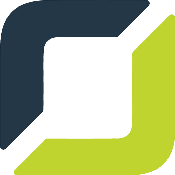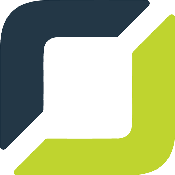Replatforming an application is a massive move that needs thoughtful consideration and planning to get it right. As your business grows, your tech requirements change, and sometimes, that means moving to a new platform that better fits your current needs.
The following is a practical, in-depth checklist designed to help you smoothly make it through each stage of the application replatforming process, from the initial prep work to guaranteeing that everything runs smoothly after launch.
Pre-Replatforming Preparation
1. Define Objectives & Goals
You must pinpoint the specific reasons driving the need to replatform, whether it’s tackling performance issues, overcoming scalability limitations, or reducing costs.
For instance, a business objective could be to increase user engagement by 20%, while a technical objective might be to reduce page load times by 30%. These objectives, when clearly defined and measurable, will guide the entire project and serve as benchmarks to assess the progress and success of your replatforming efforts.
2. Stakeholder Involvement
 Identify and engage key stakeholders from various departments—such as product owners, developers, IT, and marketing—early in the process.
Identify and engage key stakeholders from various departments—such as product owners, developers, IT, and marketing—early in the process.
Clearly defining all roles and laying out responsibilities is essential to make sure each team member understands their respective role in the broader replatforming project. Not doing so could lead to confusion and inefficiency, potentially derailing the project.
3. Current Application Audit
Conduct a thorough audit of your current application to determine what strengths it may have as well as any areas that could be improved upon. Assess performance, scalability, and architecture to identify what works well and what doesn’t.
You should carefully document all existing functionalities, third-party integrations, and dependencies to capture the full scope of what needs to be migrated.
4. Select The New Platform
You should evaluate potential platforms based on your specific business needs and technical requirements, whether you’re considering cloud providers, on-premise solutions, or a hybrid approach. Carefully consider factors such as scalability, flexibility, total cost of ownership, and how it can integrate with your existing setup and the tools you use.
Ultimately, the platform you choose should align with your organization’s goals and be capable of supporting long-term growth.
Planning & Strategy
5. Data Migration Plan
Identify all data types that need to be migrated, including their formats and volumes, to manage the transition effectively. You should develop a data mapping strategy that specifies how you will cleanse, validate, and migrate the data while minimizing disruption to ongoing operations.
6. Architecture & Design Planning
 Design the new application architecture with a focus on improving scalability, performance, and security.
Design the new application architecture with a focus on improving scalability, performance, and security.
Consider potential architectural shifts, such as moving from a monolithic structure to microservices or adopting cloud-native patterns, while aligning your decision with your business’s long-term goals.
7. Integration Requirements
Identify all third-party integrations and APIs that the new platform you’re looking at needs to support. Plan the development and testing of these integrations to make sure that they function smoothly in the new environment and maintain the necessary connectivity between the different systems.
8. Development & User Experience Enhancements
Detail the enhancements needed to improve the user experience on the new platform. Create wireframes and design mockups to guide the implementation of these improvements, aiming for a more intuitive and engaging interface.
Development & Testing
9. Development Environment Setup
Set up the development, staging, and production environments, mirroring each other closely to prevent issues during deployment. Implement strong version control and backup processes to protect against data loss during development.
10. Code Migration
Migrate the existing codebase to the new platform while verifying that it’s fully compatible with the new environment throughout the process. Refactor and optimize the code where necessary to take full advantage of the new platform’s features and capabilities.
11. Feature Development
 Develop and iterate on any new features or enhancements needed for the new platform, making sure they align with the business objectives and meet user needs.
Develop and iterate on any new features or enhancements needed for the new platform, making sure they align with the business objectives and meet user needs.
You should conduct thorough testing of each new feature, including usability tests, to confirm they work as intended and provide a positive user experience.
12. Database Migration
Now, you can migrate your databases to the new platform while diligently working to make sure that data integrity remains in-tact. You’ll want to validate that you’ve migrated all of your data correctly and that you can actually access it.
13. Testing & QA
Conduct extensive testing across all environments, including unit, integration, performance, and security testing. Take the time to find and fix any potential issues before moving on to the next phase so that the application is stable and ready for deployment.
Launch Preparation
14. Training
Train all relevant staff on the new platform’s development and operational workflows, making sure they are fully prepared to manage the platform after launch.
You should have clear, detailed documentation along with sound support systems throughout the transition, so that you can smooth out any issues that may arise during the early stages of using the new system.
15. Final QA & Testing
You want to conduct a final round of testing in the staging environment, replicating real-world conditions as closely as possible.
To confirm that everything is ready to go live, make sure you complete a pre-launch checklist covering logs, monitoring tools, and performance metrics.
16. Backup & Go-Live Plan
 To protect against unexpected issues, create a full backup of the current application and data before starting the go-live process. You should schedule your go-live time when usage is at a minimum; in doing this, you can cut down on any disruptions and keep your application running as smoothly as possible.
To protect against unexpected issues, create a full backup of the current application and data before starting the go-live process. You should schedule your go-live time when usage is at a minimum; in doing this, you can cut down on any disruptions and keep your application running as smoothly as possible.
Make sure to notify all stakeholders about the go-live schedule and outline what they should expect during the transition.
Post-Launch
17. Monitoring & Support
Monitor the application closely immediately after launch, staying alert for any issues or anomalies. Provide rapid-response support to quickly address any problems that may arise, minimizing disruption for users.
18. Performance & Analytics Monitoring
To keep the platform running efficiently, you should continuously track the application’s performance and analytics to spot any emerging issues or areas that need attention.
Tackle performance bottlenecks and fine-tune the system as needed to maintain a strong user experience.
19. Continuous Improvement
Collect user feedback to identify any usability issues or opportunities for enhancement. Make sure to properly plan for regular maintenance, updates, and the introduction of new features to keep the platform in line with business goals.
20. Review & Reporting
Hold a post-launch review meeting to reflect on the project’s successes and identify areas for improvement. You can document any lessons you’ve learned and then use them to guide future replatforming efforts, refining your processes for better outcomes.
Optional (but Recommended) Steps To Take
Performance Optimization
You can focus on improving your application’s performance by fine-tuning its speed and overall responsiveness. Implement caching and load balancing solutions to manage traffic effectively and reduce server load, keeping the application fast and reliable under various conditions.
Security Enhancements
Try to apply current security best practices to protect the application against any potential threats. You’re going to want to regularly update and patch both the platform and the application to guard against vulnerabilities and maintain a secure environment.
Disaster Recovery Plan
Take the time to develop a disaster recovery plan to prepare for possible system failures or to keep you up and running in the event of data loss.
Regularly create and validate backups so that you can quickly and accurately restore data in case of a disaster. Doing so can help effectively minimize any potential downtime and disruption.





